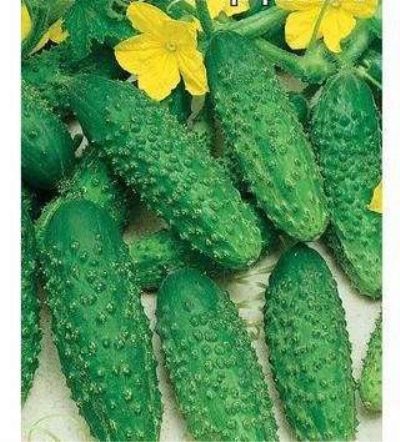
- Authors: SYNGENTA SEEDS B.V.
- Name synonyms: Pasadena
- Year of approval: 1998
- Growth type: medium-sized
- Fruit weight, g: 66-92
- Fruit length, cm: 6-9
- Fruit color: green and dark green, with stripes of medium length, with mottling
- Cucumber Mosaic Virus Resistance: tolerant
- Ripening terms: mid-early
- Fruit shape: cylindrical
Pasadena F1 (Pasadena) is a cucumber hybrid originally from the Netherlands, entered into the State Register for the Russian Federation for quite some time, in 1998. During this time, the highly productive culture managed to fall in love with domestic farmers. In addition to high yields, the hybrid variety has other advantages.
Description of the variety
The Pasadena cucumber is a medium early parthenocarpic culture of Dutch selection that does not require pollination. Recommended hybrid variety for cultivation both in greenhouses and in the open field, it is also possible to grow it in the spreading and trellis method.
Characteristics of the appearance of the plant and zelents
The plant in question can be either weak or medium-sized. Differs in the female type of flowering. Leafy dark green plates are medium in size, slightly wrinkled, slightly wavy at the edges.
Zelentsy have a cylindrical shape, they have middle tubercles, there is white pubescence. Skin color from green to dark green, with small stripes and specks. The average weight of fruits is 66-92 g, and their length is 6-9 centimeters.
Purpose and taste of fruits
The Dutch hybrid belongs to salad dressings, but is suitable not only for eating fresh cucumbers, but also for canning and pickling. Smooth gherkins look great in glass jars.
Maturation
Cucumbers of this medium-early culture gain ripeness in 45-48 days.
Yield
The Dutchman belongs to the high-yielding hybrids. So, from 1 centner of planting, plants are able to bring 153-291 kilograms of gherkins.
Growing regions
Pasadena is successfully cultivated on the territory of the Middle Volga and Central regions recommended by Rosreestr. Also productively, these cucumbers can be grown in other areas with similar climatic conditions.
Growing and care
The hybrid variety from Holland is rather unpretentious. If it is decided to grow in seedlings, seed material for seedlings is sown in early April. After 25-30 days, the grown seedlings are transferred to the ground or greenhouse. With further cultivation, the main thing is to follow simple rules of care and cultivation, which do not differ much from conventional agricultural techniques.
This crop is fed 4 times during the growing season. If grown in a trellis way, it is necessary to install supports and a system of garters. Irrigation, taking into account the weather - from 3 to 6 times a week. After watering and rains, it is necessary to loosen the soil, as well as mulch the near-stem circle. We must not forget about the prevention of diseases and protection from insect pests. Bushes require shaping, as well as pinching of the side lashes.
It is important to consider that during the fruiting period, cucumbers should be watered more often than usual. To do this, take only a settled warm liquid, its temperature should reach 20-25 degrees (if you water it with cold water, root rot may appear). Irrigation usually takes place in the evening. Drip irrigation is quite effective.
Pasadena cucumbers are usually cultivated in one trunk, on the top of the trellis, the main shoot is either pinched or thrown over the structure. It is imperative to inspect the bushes, removing leaves that have turned yellow or wilted.The hybrid is fed regularly, fertilizing after 2 weeks, with alternating organic matter and minerals.

In order to collect strong, tasty and beautiful cucumbers on your site, you need to make top dressing. Lack of nutrients can negatively affect the appearance of the plant and significantly reduce the yield. Fertilize cucumbers with organic fertilizers in combination with mineral fertilizers. With the right balance of these components and adherence to the fertilizing schedule, the cucumber yield will be maximum.
Disease and pest resistance
The Dutch cucumber hybrid in question has excellent immunity. Its resistance to such ailment as cladosporium is high. The relative immune tolerance of this culture to powdery mildew, as well as the cucumber mosaic virus.

Despite their popularity, cucumbers are often attacked by diseases and pests. From them, cucumber plantings often die before the start of fruiting. In order to prevent this from happening, it is necessary to try to prevent ailments or get rid of them at the very beginning, having studied in detail their causes of occurrence, signs and methods of treatment.





























































































